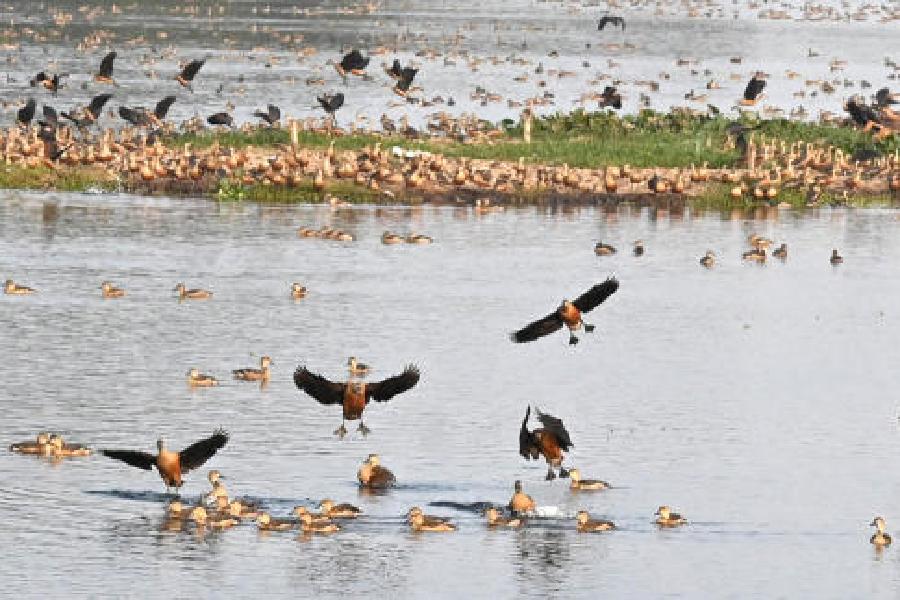More than 3,000 migratory birds have landed at the Santragachhi Jheel so far this winter, birdwatchers visiting the place said.
The water body, around 13km from the heart of Kolkata, is one of the last remaining nesting places of wintering waterfowl amid a growing sprawl of concrete in and around the city.
“The last bird count was conducted on December 17. Four Gadwalls and a Garganey were recorded during the count,” said Arjan Basu Roy, founder and secretary of Nature Mates, an NGO that works for wildlife conservation and conducted the bird count.
Gadwalls breed in central Asia, China and Mongolia and fly thousands of miles to the subcontinent to escape the harsh winter there and spend the season in water bodies and marshes in and around Kolkata, including the Santragacchi Jheel.
Garganeys breed in Europe, Siberia and the UK. Both species are trans-Himalayan migrants.
Like previous years, the overwhelming majority of birds in the water body are Lesser Whistling Ducks, which are found around water bodies in Bengal through the year but in far smaller numbers.
The ducks totalled 3,495 on the day of the count.
The counting procedure is tedious, time-consuming and requires an experienced set of eyes.
According to Roy, teams of volunteers spread out around the water body with telescopes and cameras.
“Many of the birds are difficult to spot as they nest in the water hyacinth islands and are easily camouflaged. We have to methodically scan and record their numbers. Volunteers count birds on a particular island by scanning it from left to right and calling out the numbers sequentially while a team member notes the figures down,” said Roy.
There are around a dozen hyacinth islands this year.
Veteran birdwatcher Subhankar Patra said the numbers are quite encouraging and the water body must be protected at all times of the year.
“This water body is a birdwatchers’ delight. We should take care and ensure that garbage, especially plastic, is not dumped there. Moreover, the water of the lake must be protected from encroachments at all cost,” said Patra.
According to him, there is still time left for migratory birds to arrive in Santragachhi and they are expecting the numbers to go up significantly.
According to eBird, approximately, 1,25,000 migratory birds fly every year from Siberia, China, east Europe and other parts of the world to the wetlands here. They start migrating from the last week of November and stay here till the second week of March.
Many of these birds, especially the ones which fly in from high-altitude terrain like Ladakh and other parts of the Himalayas, fly 1,000 to 5,000km. The Santragachi water body, spread over an area of 0.817sq km, plays host to migratory birds every year.
eBird is an online database of bird observations providing scientists, researchers and amateur naturalists with real-time data about bird distribution.
